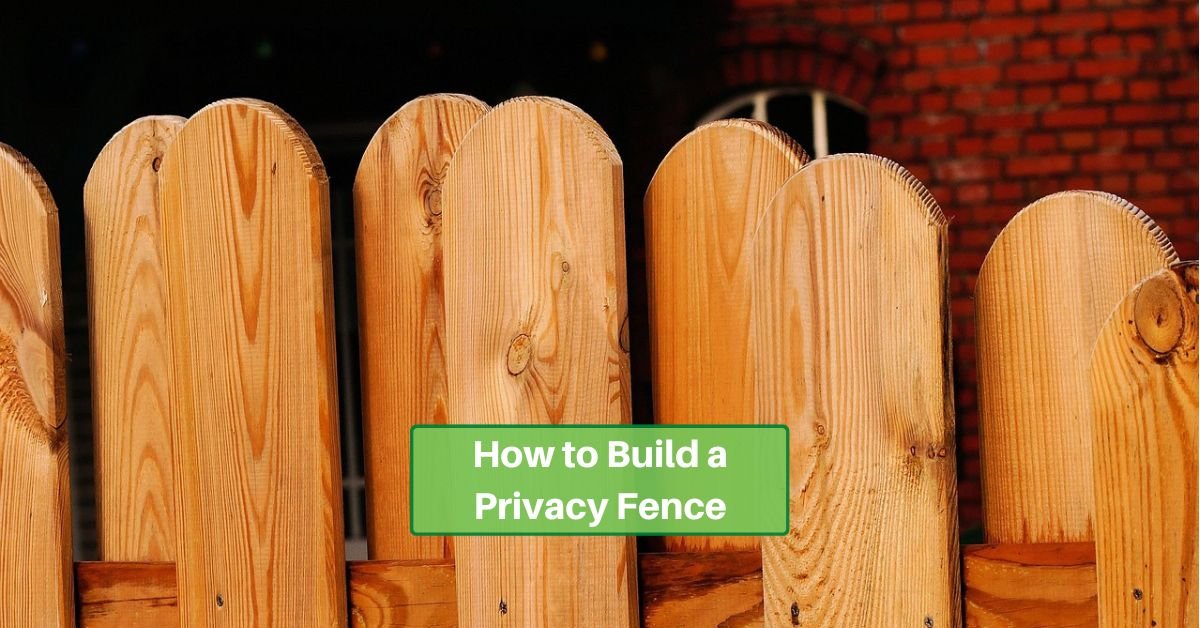A privacy fence can be a great addition to any property. It can provide a sense of security, increase the value of your home, and enhance the aesthetic appeal of your yard. In this article, we will discuss some reasons why you may want to build a privacy fence, as well as provide some tips on how to do it.
Some Reasons You May Want a Privacy Fence
There are many reasons why someone may want to build a privacy fence. Perhaps you have nosy neighbors who always seem to be peering into your yard. Or maybe you live near a busy street and want to reduce the noise and pollution that comes with it. A privacy fence can also help keep your children and pets safe by preventing them from wandering off your property.
A privacy fence can also keep your neighbor’s dogs from barking when you’re in the yard – or yours from doing the same to them. But this often depends on the pet; some dogs may be more disturbed when they hear something but can’t see it.
Staying on the Right Side of the (Property) Line
Before you start building your fence, it’s important to make sure that you are staying on the right side of the property line. This means that you need to know where your property ends and your neighbor’s begins. You can usually find this information by checking with your local government or by hiring a surveyor to come out and mark the property line for you. It’s always better to confirm this first – otherwise you could end up in a nasty and costly dispute and even have to take your fence down.
There are all kinds of local laws that affect how close to the property line you’re allowed to build a fence so be sure to check with your city or town. Many times, there are also laws that regulate what the “outside” of the fence looks like so that your neighbors aren’t stuck staring at a mess.
Where Are The “Threats” To Your Privacy?
Once you know where your property line is, you need to determine where the “threats” to your privacy are coming from. Are they coming from the street? From your neighbors? From a nearby park or public space? Identifying these threats will help you decide where to place your fence and how high it needs to be.
Also, think about lines of sight when determining how high your fence should be. If the ground slopes down outside of your property, you can get away with a short fence. On the other hand, if your property is in a low spot, or your neighbors have a raised deck, even a 6-foot-high fence may not be enough.
You won’t be able to block every possible outside view but careful thought can help make sure you minimize onlookers who are at ground level.
How High Should A Privacy Fence Be?
The height of your privacy fence will depend on several factors, including the location of the threats to your privacy and any local zoning laws or regulations. In general, most privacy fences are between 6 and 8 feet tall. However, if you live in an area with strict zoning laws, you may need to build a shorter fence. Front yards and corner properties often have to follow special regulations, too.
What Are the Best Materials For A Privacy Fence
When it comes to building a privacy fence, there are many different materials that you can choose from. Some popular options include wood, vinyl, and metal. Each material has its own advantages and disadvantages, so it’s important to do your research and choose the one that best fits your needs.
Tools And Equipment
Once you have chosen your materials, it’s time to gather the tools and equipment that you will need to build your fence. Some common tools that you may need include:
- hammer;
- nails;
- saw;
- level;
- post hole digger;
- and shovel.
Make sure that you have all of the necessary tools before you start building so that you don’t have to stop in the middle of the project.
Steps to Build the Fence
Building a privacy fence is a multi-step process that requires careful planning and attention to detail. Here is a step-by-step guide on how to build a privacy fence:
- Plan out the location of your fence: Decide where you want your fence to go and mark out the location with stakes and string.
- Dig post holes: Use a post hole digger or an auger to dig holes for your fence posts.
- Set the posts: Place your posts in the holes and fill them with concrete or gravel.
- Attach rails: Once the posts are set, attach horizontal rails between them using nails or screws.
- Install pickets: Attach vertical pickets to the rails using nails or screws.
- Add finishing touches: Once all of the pickets are installed, add any finishing touches such as caps or trim.
Building a privacy fence can be a great way to enhance the security and aesthetic appeal of your property. By following these tips and doing some research beforehand, you can ensure that your fence is built correctly and will last for years to come.









